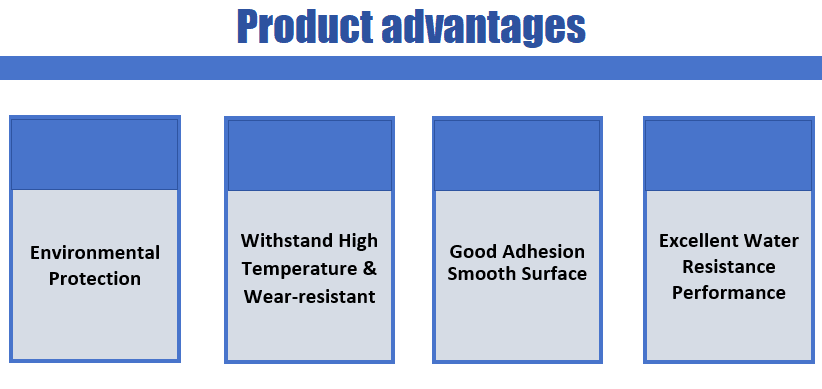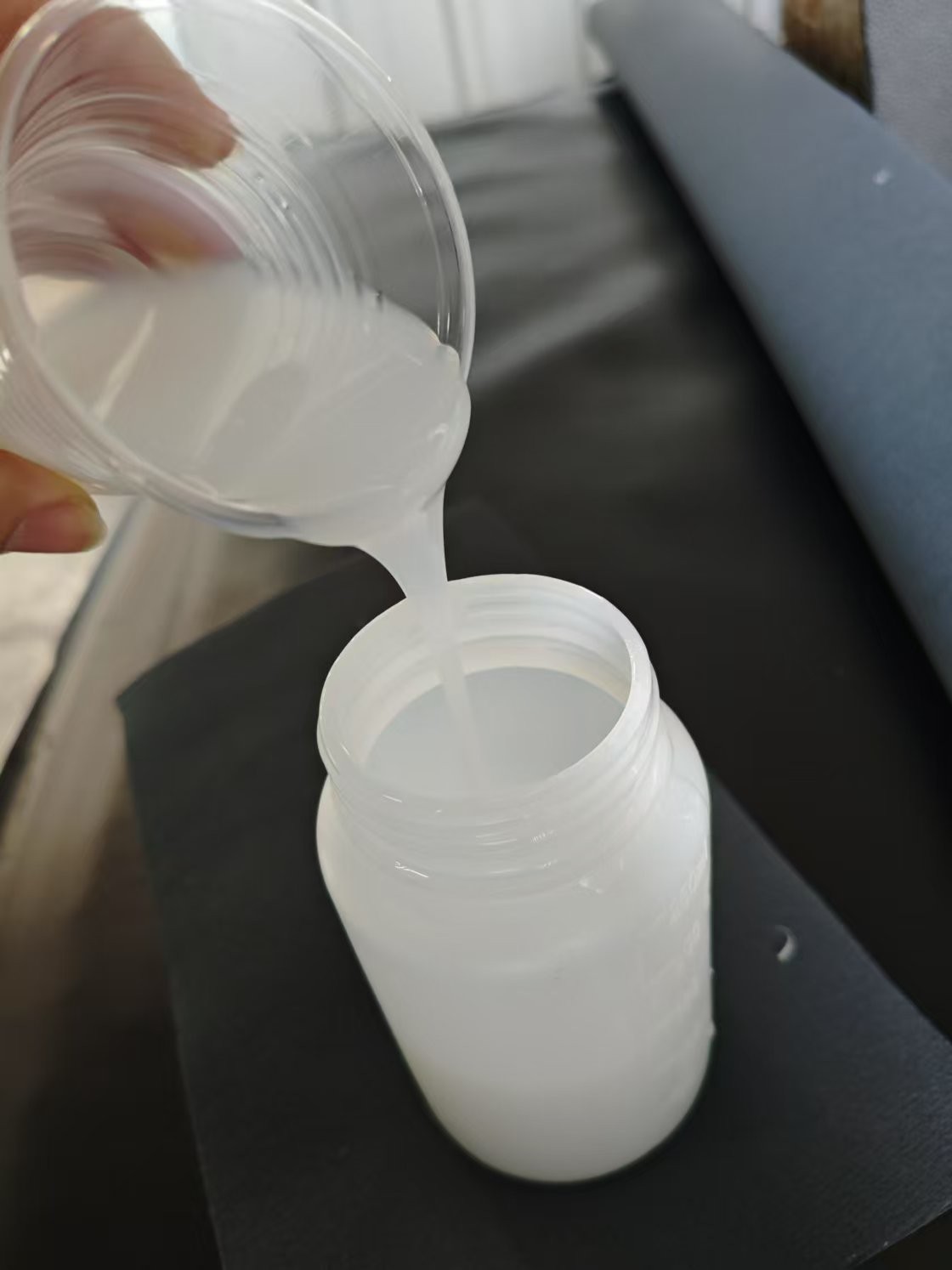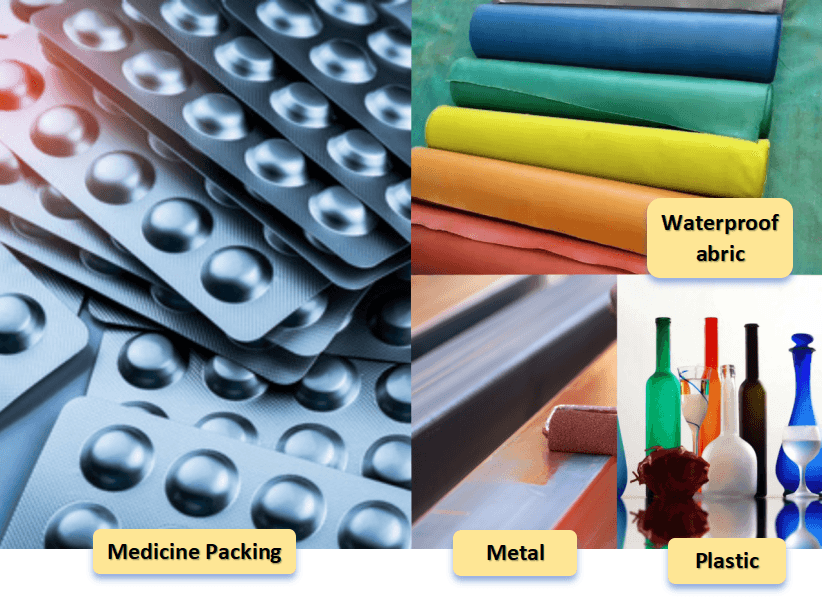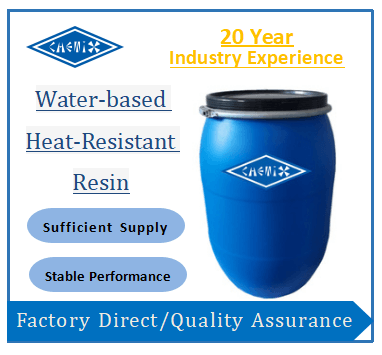Introduction

In the world of materials and construction, composite bonding has emerged as a vital process that enhances the strength and durability of various products. Understanding composite glue is essential for anyone looking to achieve optimal results in their projects, whether in manufacturing, automotive, or even DIY crafts. With a plethora of adhesive options available, knowing how to navigate this landscape can make all the difference between a successful bond and a frustrating failure.
Understanding Composite Bonding
Composite bonding refers to the technique of joining two or more materials—often differing in properties—using specialized adhesives designed for enhanced performance. The versatility of composite glue allows it to be utilized across diverse applications, from aerospace components to household repairs. This method not only improves structural integrity but also opens up innovative possibilities for design and functionality.
Importance of Choosing the Right Adhesive
Selecting the right adhesive is crucial because it directly impacts the effectiveness and longevity of your bond. With options like epoxy adhesive and plastic adhesive available, each type offers unique benefits tailored to specific materials and use cases. Making an informed choice can save you time, money, and potential headaches down the line.
Overview of Adhesive Types
Among them are epoxy two part adhesives known for their exceptional strength and durability, as well as specialized formulas like best adhesive for plastic that cater specifically to non-porous surfaces. Additionally, techniques such as ensuring proper adhesion to glass highlight how critical it is to select an appropriate product based on your project’s requirements.
What is Composite Glue?

Composite glue is a specialized adhesive designed to bond various materials together effectively. It plays a critical role in industries that require strong, durable connections between dissimilar surfaces, such as plastics, metals, and composites. Whether you're assembling furniture or creating intricate designs in aerospace engineering, composite glue ensures that your projects stand the test of time.
Definition and Uses
At its core, composite glue refers to adhesives specifically formulated for bonding composite materials. These glues are widely used in applications where traditional adhesives may fall short due to the unique properties of composite materials. From automotive parts to sporting goods and even medical devices, understanding how to use epoxy adhesive or other types of composite glue can make all the difference in achieving a reliable bond.
Key Characteristics
One of the standout features of composite glue is its exceptional strength and durability, which often surpasses that of standard adhesives. Many formulations include components like 2 part epoxy adhesive that create a robust bond upon curing. Additionally, these glues offer resistance to environmental factors such as moisture and temperature fluctuations, making them ideal for both indoor and outdoor applications.
Applications in Various Industries
Composite glue finds its way into numerous industries due to its versatility and performance qualities. In the automotive sector, it’s used for bonding lightweight components that contribute to fuel efficiency without compromising safety. In construction and manufacturing, epoxy two part adhesive is often employed for structural repairs or enhancements where traditional bonding methods would be inadequate—think adhesion to glass or ensuring strong connections between plastic parts using the best adhesive for plastic available on the market.
Exploring Epoxy Adhesives

Epoxy adhesives, particularly the 2 part epoxy adhesive, have become a staple in various bonding applications due to their exceptional strength and versatility. These adhesives consist of two components: a resin and a hardener, which when mixed together create a robust bond that can withstand significant stress and environmental factors. Whether you're working with composite glue for industrial applications or tackling home repairs, understanding the benefits of epoxy glue is essential.
Benefits of 2 Part Epoxy Adhesive
The benefits of using a 2 part epoxy adhesive are numerous and impressive. First off, this type of epoxy glue offers unmatched strength, making it ideal for heavy-duty applications where other adhesives might fail. Additionally, its resistance to chemicals and moisture ensures durability even in harsh environments, which is why many consider it the best adhesive for plastic bonding as well as various other materials.
Another advantage of 2 part epoxy adhesive is its versatility; it can bond metals, plastics, ceramics, and even glass with ease. This makes it an excellent choice not just for crafts or DIY projects but also in fields such as automotive repair and construction where reliable adhesion to glass or composite materials is crucial. Finally, the curing time can be adjusted based on the specific formulation used—allowing users to work at their own pace without sacrificing bond strength.
Comparison with Other Adhesives
When comparing epoxy adhesives to other types like cyanoacrylate (super glue) or polyurethane-based glues, it's clear that each has its unique strengths and weaknesses. For instance, while super glue offers quick bonding capabilities suitable for small repairs, it lacks the long-term durability that an epoxy two part adhesive provides under stress or exposure to elements. Polyurethane glues may offer some flexibility but often require longer curing times compared to their epoxy counterparts.
Moreover, when considering adhesion to glass or bonding dissimilar materials like plastic and metal together—epoxy stands out as the superior option due to its strong shear strength and gap-filling properties. Many professionals prefer using composite glue formulations specifically designed for challenging materials because they ensure lasting results without compromising on structural integrity. In contrast, other adhesives may struggle with certain surfaces or environmental conditions.
Best Practices for Use
To achieve optimal results with your epoxy glue application, following best practices is key. Start by ensuring that all surfaces are clean and free from dust or oil; this will enhance adhesion significantly—especially important when dealing with tricky materials like plastics or glass where surface preparation can make all the difference in performance.
Next up is mixing: always follow manufacturer guidelines regarding ratios between resin and hardener; improper mixing can lead to weak bonds that won't hold under pressure over time. Once mixed thoroughly (and quickly), apply your 2 part epoxy adhesive evenly across both surfaces you wish to bond; don’t skimp on coverage! Allow adequate curing time before subjecting your bond to any stress—patience pays off!
Why Epoxy Glue is a Top Choice

When it comes to choosing an adhesive that packs a punch, epoxy glue stands tall among its competitors. Known for its exceptional strength and durability, epoxy adhesive is the go-to option for many applications, from household repairs to industrial projects. Whether you're working with wood, metal, or even some plastics, the robust bonding capabilities of 2 part epoxy adhesive make it a reliable choice.
Exceptional Strength and Durability
One of the standout features of epoxy glue is its remarkable strength and durability. Once cured, this composite glue creates bonds that can withstand significant stress and strain, making it ideal for heavy-duty applications. Unlike other adhesives that may weaken over time or under pressure, epoxy two part adhesive maintains its integrity even in challenging environments.
The curing process of epoxy adhesive involves a chemical reaction between the resin and hardener, resulting in a bond that's not only strong but also resistant to moisture and chemicals. This makes it particularly useful in industries where exposure to harsh conditions is common. So whether you're fixing your favorite outdoor furniture or conducting more demanding repairs in an industrial setting, you can trust that epoxy will hold up against the elements.
Versatility in Different Applications
Epoxy glue isn't just about strength; it's also incredibly versatile across various applications. From crafting intricate models to repairing automotive parts or even bonding glass surfaces—this plastic adhesive does it all! Its adaptability allows users to tackle a wide range of projects without needing multiple types of adhesives on hand.
Furthermore, with options like clear epoxies available on the market, achieving seamless adhesion to glass has never been easier. This versatility means you can use epoxy two part adhesive for everything from home improvement tasks to specialized industrial applications without worrying about compatibility issues with different materials. The ability to bond dissimilar surfaces effectively makes it one of the best adhesives for plastic as well!
When to Choose Epoxy Two Part Adhesive
While there are many adhesives out there vying for your attention, knowing when to choose 2 part epoxy adhesive can save you time and frustration down the line. If your project requires high strength bonds—especially under stress—epoxy glue should be at the top of your list. Moreover, if you're working on projects that might encounter moisture or chemical exposure later on, this type of adhesive shines due to its resistance properties.
However, it's essential also to consider application methods; while mixing two components may seem daunting at first glance, once you've mastered it you'll find yourself reaping significant rewards in terms of bond quality and longevity. For those dealing specifically with plastic materials or needing adhesion to glass surfaces effectively without compromising aesthetics—epoxy truly excels here too!
In summary: when searching for an all-around champion in adhesion technology—look no further than epoxy glue—it’s durable enough for tough jobs yet versatile enough for delicate tasks alike!
The Role of Plastic Adhesive

In the world of bonding materials, plastic adhesives play a pivotal role in ensuring that various plastic components stick together effectively. With the plethora of plastics available, selecting the best adhesive for plastic applications can be daunting. However, understanding the unique characteristics of different plastics and their compatibility with adhesives is crucial for achieving strong, lasting bonds.
Best Adhesive for Plastic Applications
When it comes to choosing the best adhesive for plastic applications, several options stand out. Many professionals favor epoxy glue due to its exceptional bonding capabilities and versatility across various types of plastics. In particular, a 2 part epoxy adhesive offers robust strength and durability that can withstand environmental stressors better than many single-component adhesives.
Another popular choice is cyanoacrylate (super glue), especially for quick fixes or smaller projects where time is of the essence. However, when dealing with larger or more intricate assemblies, a high-quality composite glue may be preferable due to its ability to fill gaps and provide a more substantial bond. Ultimately, selecting an appropriate adhesive will depend on factors such as the type of plastic being bonded and the specific requirements of your project.
Bonding Techniques and Tips
Achieving optimal results when using plastic adhesives involves employing effective bonding techniques tailored to your materials. Firstly, surface preparation cannot be overstated; cleaning surfaces thoroughly removes dirt and oils that could hinder adhesion. For some plastics, light sanding can enhance surface texture and improve bonding strength when using epoxy two part adhesive or other types.
When applying your chosen adhesive—whether it’s a 2 part epoxy adhesive or a specialized plastic adhesive—ensure even distribution across both surfaces for maximum contact area. Clamping pieces together during curing helps maintain pressure while allowing proper adhesion to take place; this is particularly essential with composite glue where strong bonds are critical for structural integrity. Lastly, always follow manufacturer instructions regarding curing times to avoid premature handling that could compromise bond strength.
Adhesion to Glass: Making It Work
Bonding plastic to glass presents unique challenges but can be accomplished successfully with the right approach and materials. The key lies in utilizing an appropriate adhesive designed specifically for such applications; certain epoxy glues excel in providing strong adhesion to glass surfaces alongside plastics. When working with these materials, ensure both surfaces are clean and dry before application—this step sets the stage for successful adhesion.
To further enhance adhesion to glass when using composite glue or other adhesives, consider applying a primer designed for glass surfaces prior to bonding; this can significantly improve overall bond strength by creating a better surface profile for adhesion. Additionally, utilizing mechanical fastening methods in conjunction with adhesives can provide added security where needed—especially in high-stress environments or applications requiring long-lasting durability.
In conclusion, whether you're working on crafts at home or tackling industrial projects requiring precision bonding between different materials like glass and plastic—and seeking out the best adhesive for those tasks—understanding how each type works will empower you towards achieving optimal results every time.
Chemix's Water-Based Resin Solution

In the world of adhesives, Chemix's water-based resin solution stands out as a game-changer. This innovative product offers a plethora of benefits that make it an excellent choice for various bonding applications, particularly when it comes to composite glue. With its unique formulation, this resin not only provides strong adhesion but also caters to environmentally conscious users seeking safer alternatives.
Benefits of Water-Based Resin
Water-based resin from Chemix boasts several advantages that make it highly desirable in both industrial and DIY settings. First and foremost, this type of adhesive is incredibly easy to clean up; no more wrestling with harsh solvents or sticky messes! Additionally, the flexibility offered by water-based resins allows them to bond various materials effectively, making them a top contender for projects involving plastic adhesive or even epoxy glue applications.
Furthermore, the performance of Chemix's water-based resin rivals that of traditional epoxy adhesives. When used as a composite glue, it demonstrates exceptional strength while maintaining flexibility—perfect for those tricky projects where movement is expected. Users will appreciate how this versatile adhesive can cater to both simple repairs and complex constructions alike.
Environmental Impact and Safety
One of the standout features of Chemix’s water-based resin solution is its minimal environmental impact compared to conventional adhesives like 2 part epoxy adhesive. With a significantly reduced level of volatile organic compounds (VOCs), these resins are safer for both users and the planet. This means you can bond materials without worrying about harmful fumes or long-term ecological consequences.
Safety is paramount in any bonding application; therefore, choosing an adhesive that prioritizes health makes sense. The non-toxic nature of Chemix’s water-based resin ensures peace of mind during use—no more holding your breath while working on your latest project! As consumers become increasingly aware of their choices' environmental ramifications, opting for such eco-friendly solutions has never been more critical.
Customization and Versatility in Applications
Chemix's water-based resin offers remarkable customization options tailored to meet specific project needs—ideal for those who require adaptability in their adhesives! Whether you’re working with plastics or attempting adhesion to glass surfaces, this versatile solution has got you covered. The ability to adjust viscosity levels allows users to achieve just the right consistency for their particular application, making it one of the best adhesives for plastic on the market today.
Moreover, this product excels across various industries—from automotive repairs requiring durable bonds to crafting projects needing precision adhesion without compromising aesthetics. As many professionals know well, having a reliable all-purpose adhesive can save time and resources when tackling diverse tasks—Chemix delivers just that!
In conclusion, whether you're looking for an effective composite glue solution or need something robust yet environmentally friendly like epoxy two part adhesive alternatives, Chemix’s water-based resin is undoubtedly worth considering.
Conclusion
In the realm of composite bonding, choosing the right adhesive can significantly impact the success of your projects. With a variety of options available, including composite glue and epoxy adhesive, understanding their unique characteristics is essential. Whether you need a robust 2 part epoxy adhesive for industrial applications or the best adhesive for plastic projects, making an informed choice will lead to superior results.
How to Choose the Right Adhesive
Selecting the right adhesive involves considering several factors, such as material compatibility and environmental conditions. For instance, if you're working with plastics, looking into plastic adhesives specifically designed for that purpose can enhance performance and durability. On the other hand, if you require exceptional strength and versatility across different materials, an epoxy two part adhesive might be your best bet.
Future Trends in Composite Bonding
The future of composite bonding is poised for innovation with advancements in adhesive technology. Expect to see more eco-friendly options like water-based resins gaining popularity due to their lower environmental impact and safety features. Additionally, improved formulations for epoxy glue are likely to emerge, enhancing adhesion to glass and offering better performance in demanding applications.
Final Thoughts on Adhesive Selection
Ultimately, selecting an adhesive is not just about picking one from a shelf; it’s about matching the right product with your specific needs. From high-performance epoxy adhesives that provide unmatched strength to specialized plastic adhesives that ensure optimal bonding techniques, each has its place in various industries. Remember that understanding your materials and application requirements will guide you toward making the best choice—because when it comes to adhesion success, there's no room for compromise.
